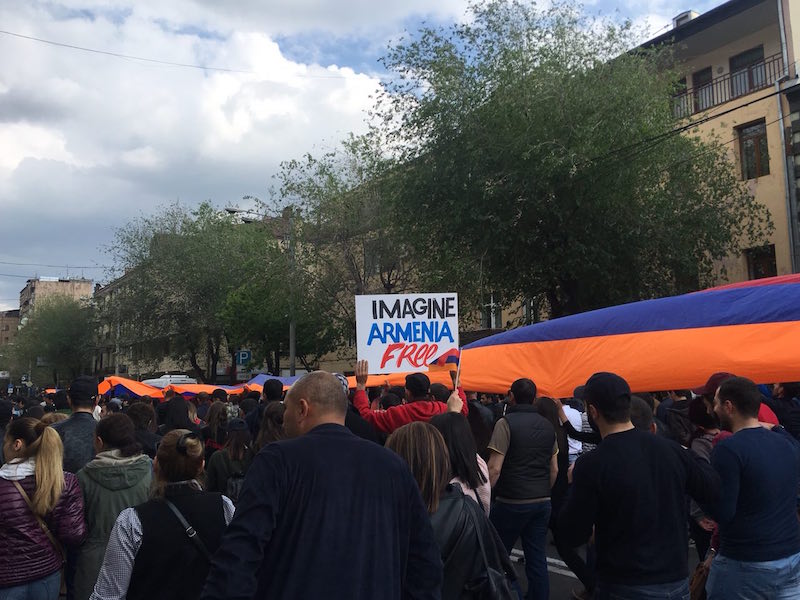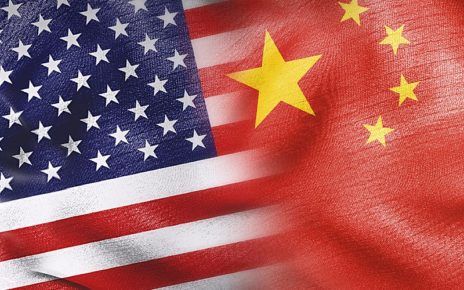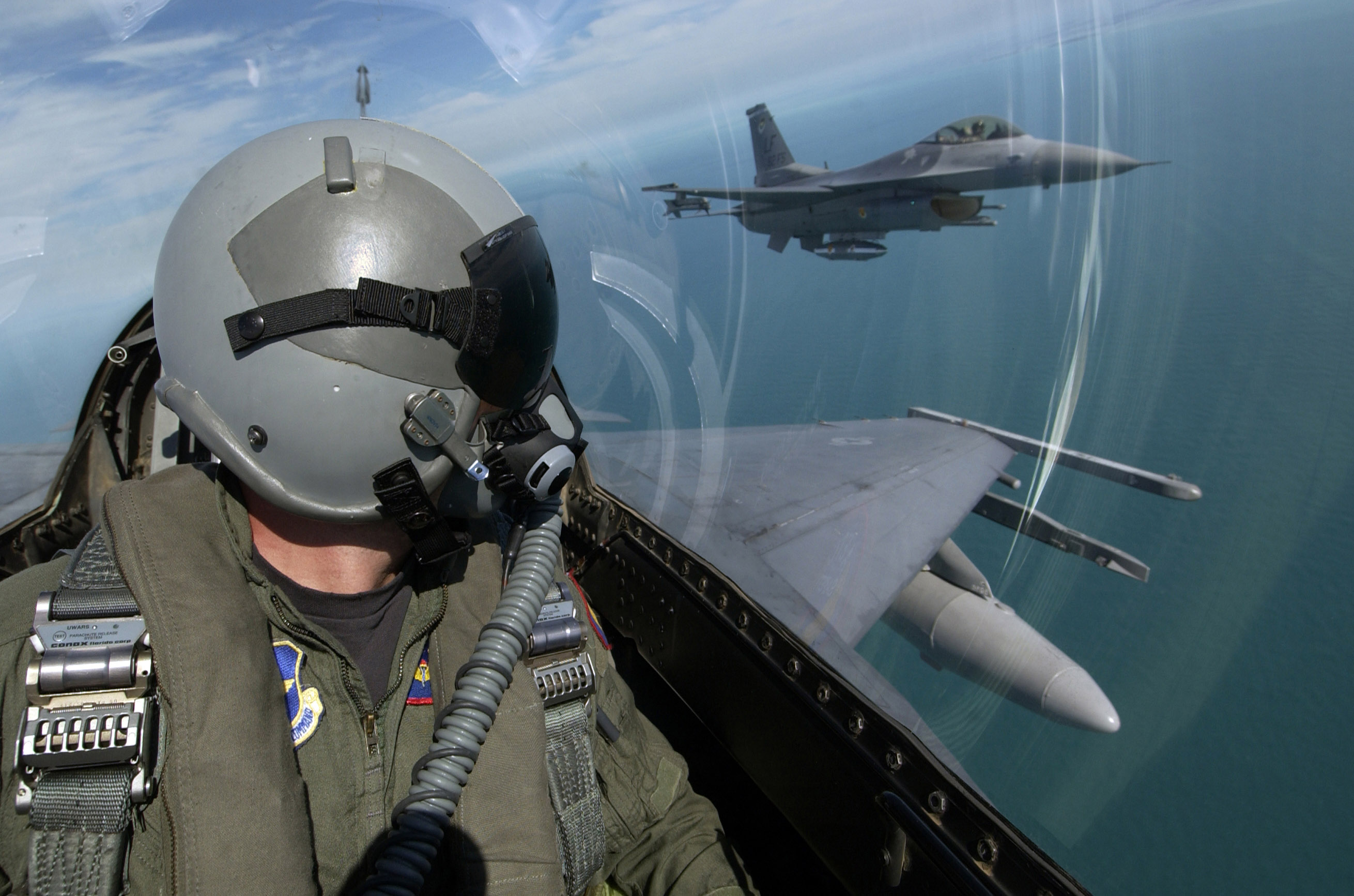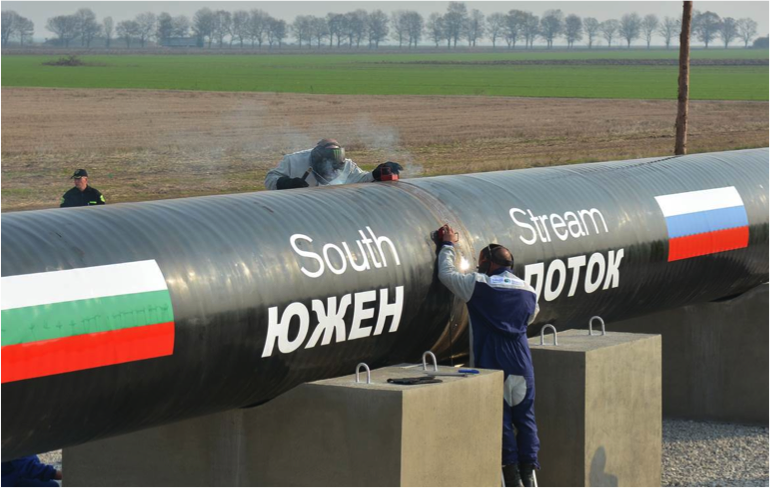The longtime leader of Armenia, Serzh Sargsyan, was recently ousted by mass protests in events only reported peripherally by Western media. Sargysan had reached his two-term limit for the presidency, and in order to retain power, passed laws transferring new executive powers to the position of prime minister, electing himself to that position on April 17th. However, on March 31st, opposition figure Nikol Pashinyan started a 14 day march to the capital, beginning with only a few people but quickly growing to thousands. After days of civil disobedience and failed talks between the opposition and ruling party, Sargsyan eventually resigned on April 23rd, and Pashinyan was grudgingly elected prime minister by parliament on May 8th. Many have dubbed this series of events “Armenia’s Velvet Revolution,” in reference to the 1989 peaceful overthrow of Communist rule in Czechoslovakia.
Why is this revolution remarkable?
Some are drawing parallels between the mass popular protests toppling a regime in Armenia with the Colour Revolutions in Ukraine and Georgia in the early 2000s. Certain Russian media sources have gone so far as to call it “another Maidan.” According to Richard Kauzlarich, a former American diplomat in the region, key similarities include: “[the] size of the crowds, along with the lack of violence and the presence of soldiers appearing alongside some demonstrators.” However, the term “Colour Revolution” has become associated with accusations of foreign interference, especially Western meddling, which helps explain why Pashinyan focuses on “the genuinely grassroots and internal character” of the uprising.
Even if it was similar to other revolutions, Armenia’s recent peaceful rebellion has still been remarkable, with over 100,000 people protesting in the main square. This has led some analysts to conclude that the revolution was “a genuine expression of the will of the people.” As many people point out, the fact that Sargsyan stepped down without any bloodshed is also very remarkable in the post-Soviet sphere. In another surprising turn, the new President Armen Sarkissian, who was chosen by Sargsyan as his successor, seems to be cooperating with the new government.
Who is leading the new government?
Pashinyan was largely unknown to the media until his protest march, with one commentator describing him as “formerly obscure,” but was a well-known opposition protest leader in 2008. The rest of the new cabinet is a mixture of civil-service technocrats and Pashinyan’s young political allies. With this diversification of powerful leaders, and Pashinyan’s lack of a clear platform, it is difficult to predict what policies he will implement. Indeed, analyst Mikael Zolyan says that “it’s hard to call the new prime minister left- or right-wing, pro-Western or pro-Russian,” but time will tell. One clear trend is that the new government has been striving to distance themselves from the elite images of their predecessors, by engaging in a “common touch” public relations campaign. Some examples of this trend include taking public transit to work, live-streaming town hall meetings and being photographed eating fast food.
What will the impact be on the Nagorno-Karabakh conflict?
Armenia, along with Azerbaijan, is one of the key players in the Nagorno-Karabakh conflict, one of the longest-lasting frozen conflicts in Eurasia. Indeed, some experts consider it the “defining issue for Armenia since it regained independence”. Thus how Pashinyan handles this particularly emotional issue is essential to his success. Interestingly, the new prime minister has already declared himself unmovable in his stance on the conflict, stating that “Karabakh ‘is an inseparable part’ of Armenia.” Some analysts go so far as to say that they believe Pashinyan wants to annex the region to Armenia. On the other hand, however, Pashinyan’s administration has already made steps to restart diplomatic relations with Turkey, which have been severed since the start of the conflict. While these offers were rejected, it is interesting that Pashinyan is striking such a hardline with Azerbaijan, while attempting to cozy up to its main ally. According to commentator Zaur Shiriyev, “Azerbaijan now views the “velvet revolution” as a double-edged sword: it got rid of Sargsyan, but it also brought to power leaders entirely unknown to Baku whose statements on Nagorno-Karabakh, at least for the time being, sound harder-line”. This theory would help explain the growing tensions regarding the conflict, with reported movements of weaponized Azerbaijani troops, and some in the Azerbaijani media demanding pre-emptive military strikes.
How will this revolution impact Armenia’s relationship with Russia?
Armenia has a close relationship with Russia, mostly due to the isolation caused by the Nagorno-Karabakh conflict. While Armenia’s relationship with Russia will necessarily remain strong, some wonder whether the events in Armenia could have a spillover effect in Russia, especially in the North Caucasus, with its large population of non-ethnic Russians. Things still look rosy for Russian-Armenian relations, as Pashinyan already met Putin at the Eurasian Economic Union (EUEC) forum earlier this month. Much of this goodwill is probably due to the fact that, according to Solyan, Pashinyan “did everything to ensure that, in Moscow, he was not considered a pro-Western politician.”
Despite the success of the protests in deposing Sargsyan and installing Pashinyan, civil disobedience continues. Many are in the streets protesting specific issues, such as political prisoners and the construction of a new dam. The ongoing disorder even prompted the new prime minister to issue statements commanding the people to stop protesting. Looking forward, Pashinyan has a monumental task ahead of him, and many argue that he should start by legitimizing his rule with free and fair elections, perhaps in September. Another key opportunity for Pashinyan is to gain the support and harness the power of the immense and influential Armenian diaspora.
Photo: Armenian Revolution (2018), by Pandukht via Wikimedia Commons. Licensed under CC BY-SA 4.0.
Disclaimer: Any views or opinions expressed in articles are solely those of the
authors and do not necessarily represent the views of the NATO Association of
Canada.




